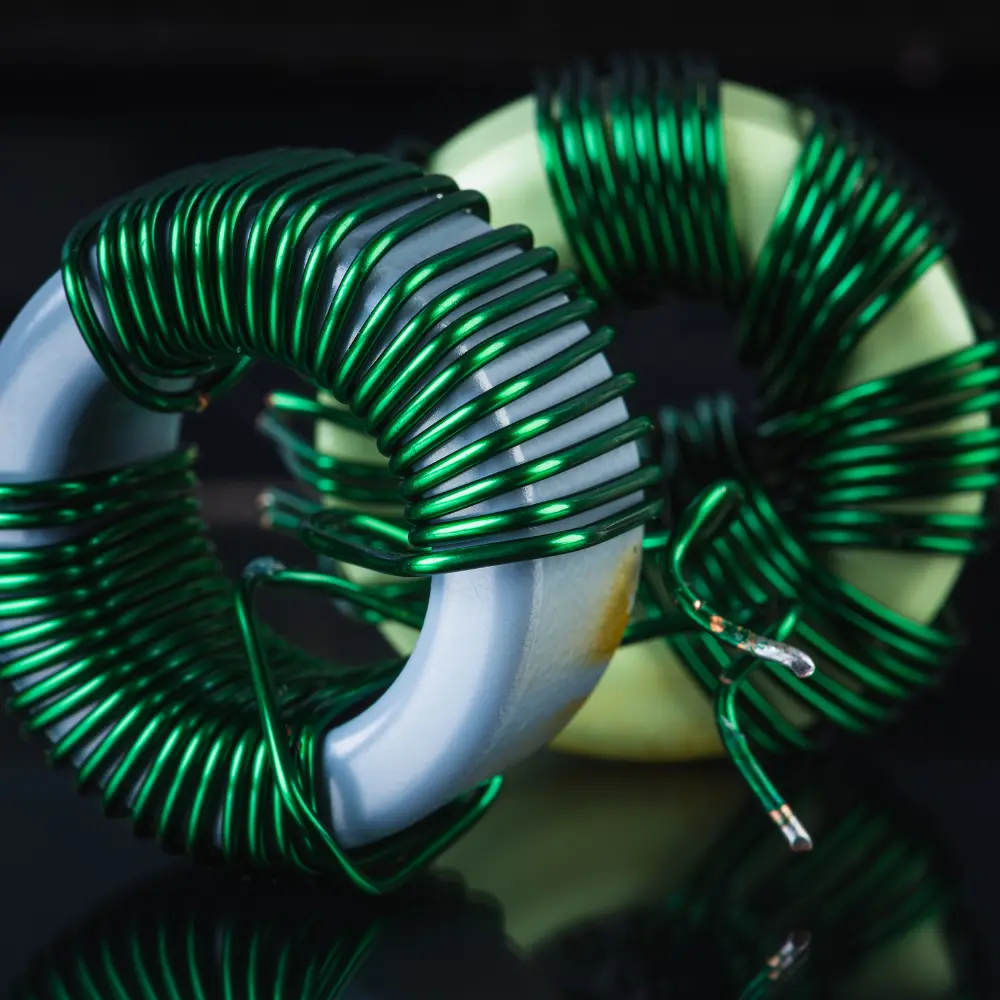Understanding Leakage Inductance in Toroidal Transformers
Toroidal transformers, known for their efficiency, compactness, and low electromagnetic noise, are indispensable in various power electronics applications. Their superior performance in audio, video, telecommunications, and medical equipment is a testament to their design, with one crucial parameter, leakage inductance, significantly influencing their operation, especially in applications requiring filtering or tuning.
While traditional methods of controlling leakage inductance can be complex and costly, sector winding offers a promising and cost-effective alternative. By strategically leaving unwound sectors in the transformer winding, this method allows for significant increases in leakage inductance without adding to the transformer’s size or weight, making it a practical and efficient solution.
The Challenge: Geometrical Parameters and Their Influence on Leakage Inductance
 Designing toroidal transformers with specific leakage inductance values presents a significant challenge, with the influence of various geometrical parameters being a key factor. The leakage inductance of a toroidal transformer is highly dependent on the core’s internal diameter (ID), external diameter (OD), height (HT), and the angle of the unwound sector (θ). The precise control and optimization of these parameters are crucial for achieving the desired inductance values, underscoring the importance of your role in this process.
Designing toroidal transformers with specific leakage inductance values presents a significant challenge, with the influence of various geometrical parameters being a key factor. The leakage inductance of a toroidal transformer is highly dependent on the core’s internal diameter (ID), external diameter (OD), height (HT), and the angle of the unwound sector (θ). The precise control and optimization of these parameters are crucial for achieving the desired inductance values, underscoring the importance of your role in this process.
Core Dimensions and Leakage Inductance
- Internal Diameter (ID): The leakage inductance varies inversely with the core’s internal diameter. As the ID decreases, the leakage inductance increases. However, a smaller ID also means a smaller core, which may not be suitable for applications that require high power. This relationship is critical for designers aiming to maximize inductance within space constraints.
- External Diameter (OD): The leakage inductance increases linearly with the core’s external diameter. A more considerable OD results in higher inductance, making it a key parameter in transformer design.
- Height (HT): Similar to OD, the core height directly influences the leakage inductance. Increasing the core height leads to higher inductance, providing another lever for designers to achieve specific inductance targets.
- Unwound Sector Angle (θ): The angle of the unwound sector is perhaps the most significant parameter. The leakage inductance varies quadratically with the unwound angle, meaning that even small changes in this angle can result in substantial differences in inductance.
Leakage inductance is a critical factor that significantly impacts the performance of toroidal transformers, especially in applications requiring precise filtering or tuning. Traditional methods to control this parameter often increase costs and added weight due to complex winding techniques or additional components.
Methods for Controlling Leakage Inductance in Toroidal Transformer
Strategically leaving unwound sectors enhances leakage inductance without altering the transformer’s size or weight. Understanding and optimizing geometrical parameters such as internal diameter, external diameter, core height, and unwound sector angle are essential for achieving the desired inductance values in custom coil winding designs.
Partnering with Torelco ensures you benefit from our expertise in creating custom toroidal transformers with precise coil winding techniques. Our specialized knowledge and experience in sector winding allow us to optimize the geometrical parameters to meet your specific leakage inductance requirements. By choosing Torelco, you are guaranteed high-performance transformers tailored to your application needs and delivered efficiently and reliably. Let us help you achieve the best possible performance in your power electronics designs with our advanced custom coil winding solutions.

